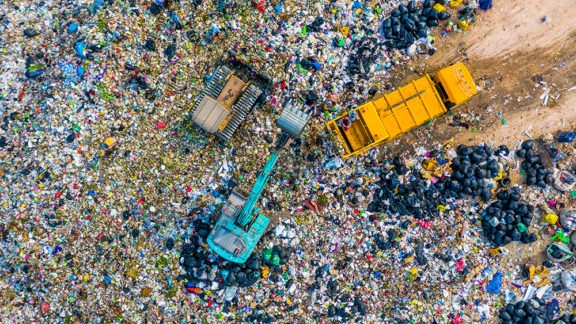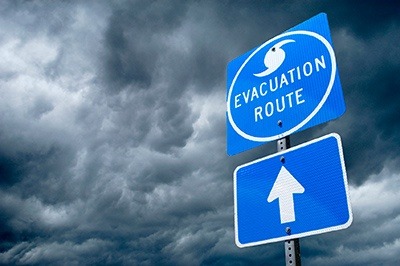Damage from a disrupter (such as a pandemic) is fast and unforgiving: It’s estimated that 90 percent of businesses will fail within two years following a disaster, according to the U.S. Small Business Administration (SBA). A local economic impact report released in September 2020 revealed that almost 100,000 businesses had permanently shut their doors due to the pandemic. The domino effect of these closed businesses will further impact the supply chain. Better business continuity plans or more nimble pandemic responses might have saved many of these organizations.
In 2021, some organizations were way ahead of the game – their EHS&S (Environment, Health, Safety and Sustainability) teams came together, sharing information between silos, and effectively communicating across departments. On the other end of the spectrum were organizations that struggled with resource availability, creating and enforcing policies in the workplace, and handling exposures that occurred outside of the workplace; some also contributed a portion of the $2.5 million in fines that the Occupational Safety and Health Administration (OSHA) imposed for violations.
Regardless of your organization’s COVID-19 experience, one thing is true: The pandemic has highlighted the importance of the EHS&S function for all organizations. We are now keenly aware of the role strategic planning and long-term sustainability play in how a company navigates through the current pandemic and prepares for future disrupters. By using holistic thinking, having an effective business continuity plan in place, and driving strategic communications, your organization’s response to the next disrupter can minimize risk, promote health and safety, and ensure resiliency.
Think holistically

Many EHS&S practitioners use systems thinking to understand issues not as isolated components, but in terms of how they can impact the larger organizational framework. A holistic approach means looking at the big picture, keeping in mind that the systems should ultimately help people. For example, instead of focusing on “compliance” and “safety,” EHS&S professionals should seek to understand the needs of all stakeholders involved and think about compliance and safety within the organization’s ecosystem – or the interdependencies that exist between internal and external stakeholders. Consider the impact of a given policy and collaborate with the people who will make it operational. If the goal is to ensure safety within your organization, develop policies and procedures to ultimately help people stay safe – not just enforce compliance. Individual stakeholders make up the system, so it’s critical to consider that systems are about both process and the people who manage those processes. Employing systems thinking ultimately promotes health and safety across the organization, mitigates risk, and supports resiliency.
Create a business continuity plan
Getting ahead of the next crisis is critical. Lessons learned from COVID-19 will fortify a business continuity plan (BCP) and keep you prepared for future disrupters. The EHS&S team can provide value and build organizational resiliency by adopting a BCP based on an evaluation of your organization’s response to and experience with COVID-19. Take a deep dive into your organization’s response and consider what worked well and what did not. Here are some steps you can follow:
- Brainstorm and create response plans for example scenarios like earthquakes, hurricanes, civil unrest, or pandemics.
- Account for the systems you have in place and your recovery time to understand how long your organization has before it depletes resources or abilities.
- Define what recovery from disruption will look like.
- Document your BCP to ensure your organization weathers the next storm.
Drive strategic communications

COVID-19 also taught organizations crucial lessons about the value of communication between EHS&S and executives, and across the organization. Partnership between the EHS&S team and the C-suite is critical, as together the two entities can properly set the culture and expectations for organizational health, safety, and compliance.
If your organization is not already engaging in this type of communication, there are several ways to facilitate it. First, EHS&S practitioners should make the C-suite aware of safety, risk, and compliance issues so that executives, in turn, can communicate effectively with stakeholders and employees during a disruption. Transparency and authoritative information from executives increase employees’ confidence in their organization’s leadership and perhaps, more importantly, leaves them feeling safer and more secure. Another way to promote trust and the communication of critical information is to include EHS&S staff in senior-level meetings. Finally, consider other leaders with whom EHS&S practitioners should work. For example, partnering with Operations or Human Resources helps prioritize health and safety by pushing the right content to the workforce, making them topics everyone is talking about. Guidance and policies may carry more weight when the message comes from multiple voices, instead of solely from the EHS&S team.
As part of your BCP, develop a detailed communications plan. The framework should include these considerations:
- Frequency. You want to land in the “Goldilocks” zone to ensure you inform people and maintain their safety with just enough actionable information. Too much communication risks overload and employees may not read emails if they’re inundated with information, but not enough information could lead to distrust or an unsafe environment.
- Partnership. Seek to integrate EHS&S contributions into company communications and ensure the necessary parties have a seat at the table.
- Adaptability. Identify the target audience and craft the communication to hit that target, considering the kind of information various teams need and how much is “too much.” For example, a detailed 30-page policy document might work well for the Legal Department, but an easy-to-consume version highlighting key takeaways using bullet points, diagrams, and pictures could be more suitable for those on the shop floor.
Prepare your organization for the next disrupter and maximize the value your EHS&S team can bring to the table. You can’t predict what’s on the horizon, but you can adopt holistic thinking, build a business continuity plan, and communicate strategically to ensure your company is resilient, whatever comes its way.
Please contact me with any questions about this blog or how you can help your business get ready for the challenges of tomorrow.
Published: 3/9/2021
Author

Senior Technical Expert




